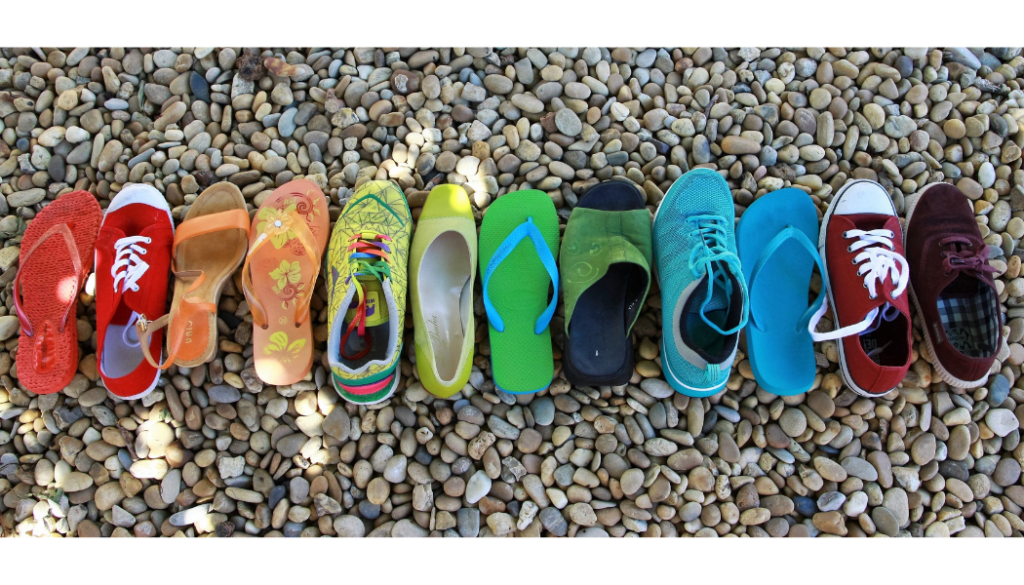
The answer, like so many answers in healthcare, is “It depends.”
In this 3-part series, I’ll help you to determine the optimal features of shoes for your particular foot. Part 1 will look at how your foot is constructed and what’s needed from your foot when walking. Part 2 will talk about what shoes help a person with flat feet. And Part 3 will look at what shoes can help a person with high arches in their feet.
Let’s get started with Part 1…
The foot is an absolute marvel of construction. With each step, the foot must adapt to the unique attributes of the surface and withstand large amounts of force. When your foot hits the ground, the ground hits back. We’ve all heard the phrase “for each action there is an equal and opposite reaction.” In the case of walking, this ‘opposite reaction” is known as ground reaction force and your foot and often your entire body is affected by this force with every step. Several attributes of the anatomy and function of the foot are designed to absorb and adapt to these forces.
When it comes to determining the best shoes in which to invest, I suggest temporarily setting aside considerations of style and belief and looking instead at how your foot needs to function for optimal comfort, whether it is able to function that way based on your unique anatomy, and how your shoes can help or hinder those functions.
Let’s take a quick look at the walking cycle. During one walking or gait cycle, your foot lands on the ground and remains there as your body travels forward over your foot. Then your heel comes up and you push off to propel yourself onto your other foot.
So what does your foot need to be able to do while you are walking?
As your foot lands on the ground and your body travels forward over your foot, your foot needs to be flexible so it can absorb the ground reaction forces and protect your leg and back from these forces. It also needs to adapt to any unevenness on the surface. If the ground is slanted, the sidewalk raised or there’s a rock or twig, your mobile foot helps you keep your balance and take this in stride. As your foot prepares to propel you forward onto the other foot, it needs to become rigid. It’s more effective to push off something rigid than something flexible. So with each step you take, your foot needs to be flexible at times and rigid at times.
Now look at your feet while you are standing…
Do you tend toward flat feet? Or do you have a high arched foot? Because of the interlocking bone structure in the foot, a flat foot is more mobile and flexible and a high arched foot is more rigid.
If you tend toward flat feet, you are in good shape when the foot needs to be mobile as in the early part of the gait cycle. Your foot will absorb ground reaction forces and adapt to the uneven surfaces. However, toward the end of the cycle, when your foot needs to become rigid, your foot may still be too mobile and you may run into trouble. If you are having trouble with bunions, plantar fasciitis, or your knees, changing the type of shoes you wear may be helpful.
If you tend toward high arched feet, you are in good shape when the foot needs to be rigid as in the later part of the gait cycle. You’ll be able to push off and propel yourself forward onto the other foot very well. However, when you need flexibility, like in the early part of the gait cycle, your foot may be too rigid to effectively absorb ground reaction forces and adapt to uneven surfaces. If you’re having trouble with spraining your ankles with back pain, a different type of shoe may help.
If everything is going great, that’s wonderful! You can file this information away for use at another time.
Coming up in Part 2, we’ll talk about the shoe features that help a flatter foot. Thanks for reading!
